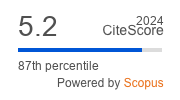Article | Open Access
A Big Data View of the European Energy Union: Shifting from ‘a Floating Signifier’ to an Active Driver of Decarbonisation?
| Views: | 4764 | | | Downloads: | 2289 |
Abstract: The Energy Union, a major energy sector reform project launched by the European Commission in 2015, has substantial clean energy and climate aims. However, scholarly caution has been raised about their feasibility, especially with regards to accommodating climate objectives with other closely related yet often competing policy goals. We therefore investigated the policy priorities of the Energy Union by performing a topic modelling analysis of over 5,000 policy documents. A big data analysis confirms that decarbonisation and energy efficiency dimensions are major building blocks in the Energy Union’s agenda. Furthermore, there are signals of policy convergence in terms of climate security and climate affordability policies. However, our analysis also suggests that the Commission is not actively prescribing trajectories for renewable policy development or paying close attention to declining incumbent energy generation technologies. Overall, we find that the Energy Union is not a ‘floating signifier’ but rather has a clear and incrementally evolving decarbonisation agenda. Whether it further develops into an active driver of decarbonisation will largely be determined by the implementation phase of the project.
Keywords: clean energy transition; energy policy; energy security; European Commission; European Union; policy integration; renewable energy; sustainability; topic modelling
Supplementary Files:
Published:
© Karoliina Isoaho, Fanni Moilanen, Arho Toikka. This is an open access article distributed under the terms of the Creative Commons Attribution 4.0 license (http://creativecommons.org/licenses/by/4.0), which permits any use, distribution, and reproduction of the work without further permission provided the original author(s) and source are credited.


